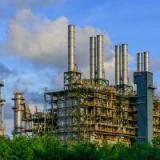Feedwater Treatment Chemicals
Reduce corrosion, oxygen-related failures and maintenance costs with Veolia’s suite of oxygen scavengers
Reduce corrosion, oxygen-related failures and maintenance costs with Veolia’s suite of oxygen scavengers
Even when properly treated by a deaerator, boiler feedwater typically contains traces of oxygen that present a risk of corrosion to the feedwater and boiler metallurgy. Oxygen pitting attacks can result in rapid failures in feedwater lines, especially economizers, as well as boilers and condensate lines. An efficient oxygen scavenger treatment program is essential to meet industrial standards and minimize unplanned downtime, production losses and maintenance costs.
Product Highlight
Features & Benefits
Case Studies

CorTrol OS and Steamate PAS reduce corrosion, maintenance and downtime while increasing efficiency for paper mill
A paper mill was experiencing oxygen ingress and steam-side corrosion of its dryer cans.

Ethylene plant has none straight years of cost savings with CorTrol
An ethylene plant with Transfer Line Exchangers waste heat boilers experienced higher levels of iron and copper than recommended by accepted industry best practices.
